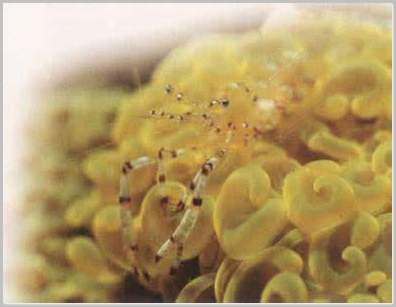Every organism is born with a blueprint set of instructions called DNA. These instructions will set the events in motion for an organism to grow, develop and eventually reproduce. Unlike humans, other species have no control over how and when they reproduce, the method and cycle is part of their instructions. Whether or not sex is necessary for their reproduction depends on the organism. Their bodies will sense when the time is right and instinctively know what to do.

A vast majority of species use one of four methods of reproduction classified as asexual reproduction. The term asexual refers to reproduction without the use of gametes (egg and sperm) or sex cells. The first organisms on Earth reproduced this way to increase their populations; however this slowed their evolution due to a lack of genetic diversity.
Sexual reproduction allows for the exchange of alleles (genetic characteristics) from breeding with different members of the opposite sex, which follows natural selection to breed out undesired characteristics, and aid in the evolution of a species. Asexual reproduction will exchange the exact copy of alleles from a parent to a daughter organism.
Organisms like Parameciums and Amoebas are Protists. These organisms are one celled and live separately or in colonies. To reproduce, Protists use an asexual reproduction called fission. Some multicellular organisms, like worms, also reproduce by fission. The process of fission is the division of cells. A constriction of the plasma membrane folding inward and pinching itself in two to create two separate cells from one cell is called binary fission. Each cell contains equal amounts of structures and is exactly alike. For multicellular organisms that use fission there is a division along their bodies. This division can be longitudinal, asymmetrical or transverse. Worms can create more than one constriction along the length of their bodies and form a chain of individuals; this is known as multiple fission.
Another form of the reproduction is budding. Budding can be internal or external depending on the organism. Budding occurs in mostly sessile (attached to substrate) organisms. A Hydra is a freshwater organism that attaches itself to the underside of leaves. Many species of sponges and the Hydra perform external budding. Cells will quickly divide within them and develop on the surface of the organism. These cells will form branches or extensions of the parent as they develop into a new organism. The bud will eventually break off and attach itself to substrate close by or where the current carries them. If the bud remains attached to the parent, a colony is formed. Other species of sponges perform internal budding. These sponges are mostly freshwater organisms, and they produce gemmules. A gemmule is a group of many cells surrounded by a larger cell wall that forms their body. Gemmules stay inside the sponges and upon the death and disintegration of the parent sponge, these gemmules will form a new sponge.
Fragmentation is a form of asexual reproduction through regeneration of tissue. This form of reproduction is unique in that sexual reproducing and asexual reproducing organisms perform fragmentation. Sea stars are able to use fragmentation for regeneration of tissue when an arm is lost or damaged from injury. As long as part of the central disk is present, a sea star can regenerate the remaining tissues. Sea anemones can move along the substrate of the ocean floor. As they move, pieces will break off and eventually form a new organism. Fragmentation is a slow process; it can take up to a year for a sea star to regenerate an arm.
The last form of reproduction is parthenogenesis. Organisms that use parthenogenesis can sometimes also perform sexual reproduction during a point in their life cycle. No fertilization if required for this form of asexual reproduction for an egg. Only female chromosomes are present in the egg and therefore lack genetic variety. The egg is activated without fertilization and undergoes cell divisions and development into an embryo. This form of reproduction is not very common and only organisms that are in a well adapted environment use this method. Bees use this form of reproduction to produce mass numbers of males (drones) for a colony. Bees will use sexual reproduction to produce a queen and sterile female workers. Lobsters, some lizards, and certain fish also use this form of reproduction.
There are advantages of asexual reproduction as well as disadvantages. Marine environments usually remain constant and provide a stable environment for organisms whose genetic variability remains constant. Seasons of the year can also dictate reproductive processes. When an organism’s environment is favorable for reproduction, large numbers of offspring can be produced, even from a single parent. To continue a species, being able to mass produce offspring is very productive; however, it can also be detrimental to the species. If all the organisms are the same genetically, one disease can wipe out the entire colony. Any mutations the parent had are also passed along to the offspring. Mutations are often lethal to the offspring. Sexual reproduction allows mutations to often skip offspring, or only infect few of them.
DNA will determine if sex is necessary or not from the code of instruction. Organisms, whether they are single or multiple celled, use varieties of methods, and sometimes more than one, to reproduce. These differences make the classification of species more complex, but certainly more interesting.

